The Economics of Plugged Leaks

Mr. Balazs insists on privacy, discouraging cellphone pictures by guests. Employees surrender their phones during working hours and submit to “the most draconian sort of confidentiality agreements,” he said.
A recent breach at Mr. Balazs’s Standard, High Line in New York — the leak of a video of Jay Z and Solange Knowles fighting in an elevator — heightened the need for such measures. Mr. Balazs said that the employee who leaked the video was fired within 24 hours, and that he and Jay Z are considering legal action.
In this age of (slightly) renewed concern for labor issues, one wonders if TMZ’s compensation for video footage now takes into account that the leaker will surely be fired, and possibly even sued; it must be payment for services rendered, a severance package, and provide for potential legal fees, all in one (presumably very) lump sum. If it doesn’t, will anyone picket TMZ in support of its exploited leakers?
Brink Year
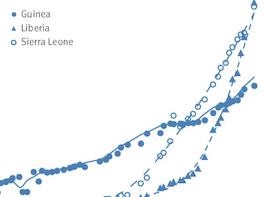
Which cascading threat are you afraid of, personally, as the end of the year crests the horizon? Cascading disease?
In a worst-case hypothetical scenario, should the outbreak continue with recent trends, the case burden could gain an additional 77,181 to 277,124 cases by the end of 2014.
Cascading militancy?
Turkey’s failure thus far to help choke off the oil trade symbolizes the magnitude of the challenges facing the administration both in assembling a coalition to counter the Sunni militant group and in starving its lifeblood. ISIS’ access to cash is critical to its ability to recruit members, meet its growing payroll of fighters, expand its reach and operate across the territory of two countries.
Cascading machine intelligence?
In a lot of these models [for the expansion of artificial intelligence], you have what amounts to a population explosion of digital minds, to the point where you drive down the wages to subsistence level. The subsistence level for digital minds would be a lot lower than for biological minds. Biological humans need to have houses — we need to eat, we need to transport ourselves. Digital minds could earn, like, a penny an hour. The wage level would fall; humans could then no longer earn a wage income. It looks very questionable, in this free-for-all competitive world, that we would find a niche for our small, stupid, obsolete minds…
Cascading environmental collapse?
It is a rare moment when scientists can point to an animal at the edge of extinction and predict when it might disappear forever. But it is happening here, under the golden waters of the desert-rimmed sea, where a small porpoise has almost vanished.
Cascading brands?
The world’s biggest beverage company will begin selling 12-packs of the sweet citrus drink on Amazon Monday, according to a statement, marking the first time Coca-Cola has sold a product exclusively online… “Future plans for the brand will depend on the level of excitement exhibited by fans across the country,” Wendy Clark, president of sparkling and strategic marketing for Coca-Cola North America, said in the statement.
This is really more a question of self-soothing: Which of these can’t you put out of mind with an “it’ll slow down, eventually” or a “what rises fast falls fast” or a “but think of the real estate opportunities” or an “if this was going to happen an alien civilization would have seen it through millions of years ago and the hyperintelligence would have already found and destroyed us?”
The Whole New Perfume Genius Album Is Streaming
NPR is streaming the whole new Perfume Genius album. For those who like to try before they buy, I suppose.
New York City, September 11, 2014

★ Not only did it not conform to any fixed ideas of what other day it might resemble, it would not even conform to itself. The morning sky was a softly rumpled gray, with cool air coming through the windows and the floors feeling damp under bare feet. Little openings of blue passed now and again, moving north fairly quickly. The ropes of the waterproofing crew’s rig swayed darkly back and forth across the windows. A moment of sun passed, and the air got more and more stuffy. By the end of the school day, the cloud cover had come apart into streaks and ripples of white on blue. Then came near-full sun and sweltering air, hide-in-the-shade heat. That in turn gave way to a darkening sky, with a reddish tinge upriver, holding for a long menacing movement — and then surrendering too, till returning sun lit the sides of the rigging rope bright manila. Sunset was colorful, but nothing extraordinary.
This Week in Lines
by Jake Gallagher
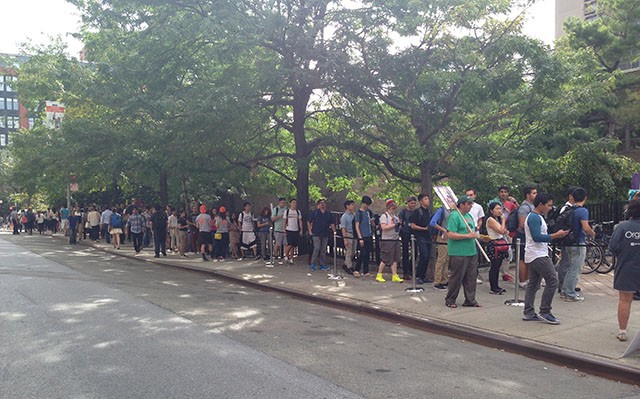
4:18 A.M. Monday, September 8 — NYU Orientation
Location: Bleecker and Mercer
Length: At least two hundred backpacked cattle
Weather: 75 and mostly sunny
Crowd: Literal fresh-faced fresh-persons
Mood: “Zomg so excited!!!1”
Wait time: Four or five years, depending on major
Lingering question: How many mansions could you purchase with the amount of student debt accumulated the occupants of this line?

7:17 P.M. Thursday, September 11 — Mighty Quinn’s Barbecue
Location: 2nd Avenue and 6th Street
Length: Nineteen people
Weather: 82 and mostly cloudy outside; slowcooked and steamy inside.
Crowd: Meaty
Mood: Carnivorous
Wait time: Twelve minutes
Lingering question: How many cows died for these meals?
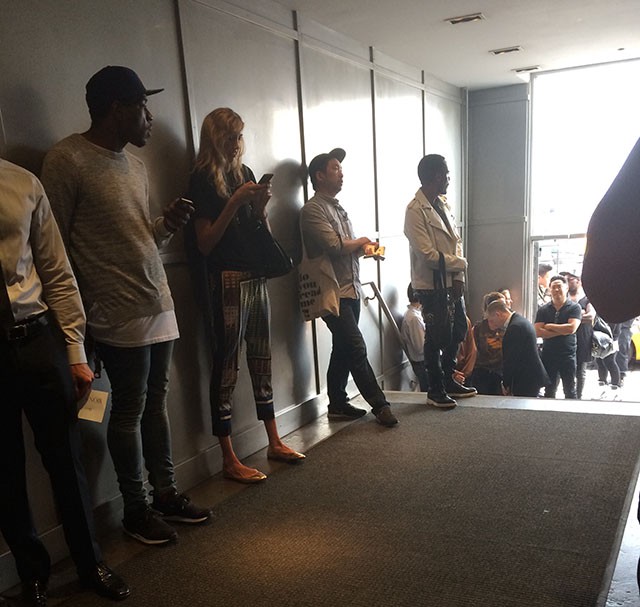
11:57 A.M. Thursday, September 11 — En Noir fashion show
Location: Pier 59
Length: Fifty-three people
Weather: 77 and cloudy
Crowd: Leather-clad fashion week attendees trying desperately to ignore the humidity
Mood: Calm, cool, and contrived
Wait time: Thirty-five minutes
Lingering question: How many cows died for these outfits?
Jake Gallagher is a writer for A Continuous Lean and other places.
Eat the Skin
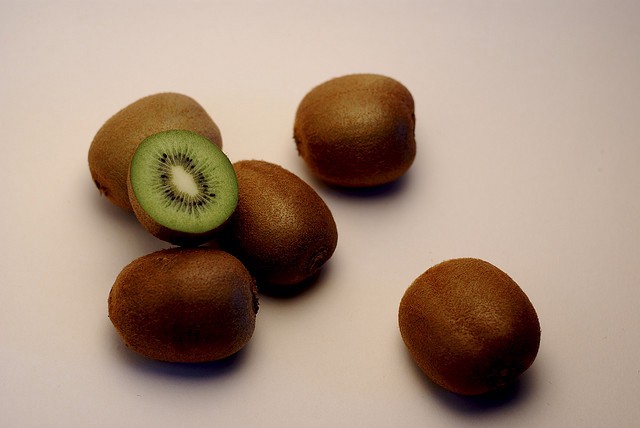
Before eating many fruits and some vegetables, some people — bad, or perhaps ignorant people — do something which renders the produce less tasty, less colorful, less texturally interesting, and much less nutritious. The worst of these offenses involves one of my favorite fruits: the kiwi.
California grows the vast majority of domestic kiwi, and California’s kiwi growing season starts in October, which is mere weeks away. This is exciting, because the kiwi is a spectacular fruit: its color is otherworldly; it leans wonderfully to the tart side of the sweet/tart scale; and it has more vitamin C than an orange. But an awful lot of people don’t buy them, because they are seen, incorrectly, as being in the grand tradition of difficult-to-eat tropical fruits.
Just as it takes practice to properly carve a mango (the first method here is the correct one, since you should never peel a mango before cutting it), or to remove the spiky, dangerous skin of a pineapple (like this), the kiwi has the reputation of a fruit that requires…work. Typical ways to eat it include skinning it with a vegetable peeler and slicing into rounds or cutting it in half and scooping out the insides with a spoon. These options require not one but TWO utensils. Jesus Christ.
I am about to blow your minds, friends. (Unless you already know this, in which case, cool, let’s make a salad together sometime.) The proper way to eat a kiwi is exactly the way you would eat a peach.
Which is to say, wash it lightly, and then bite right into it. The kiwi is better with its skin than without it. The skin isn’t just edible, it’s one of my favorite parts of any fruit. It’s similar to a peach skin, in that it is sort of fuzzy and that the flesh directly under the skin is a bit more tart than the deep insides, but the kiwi’s skin is even thicker and thus provides even more delightful textural contrast to the green flesh within.
But what about the fuzz, you ask? Surely it renders the kiwi unpleasant to eat! To that I ask this: how many people reading this post have a beard or enjoy kissing people with beards or both? I WOULD WAGER THERE ARE A LOT OF YOU.
Give the kiwi a rinse under cold water then scratch it lightly with your fingernails, rub it with a dish towel, or scrape it with a spoon to remove the excess fuzz. This takes about five seconds; the fuzz will come shed itself easily. In fact, the only parts of the kiwi that aren’t edible are the ends, where the fruit attaches to the vine (kiwis grow on vines, like grapes).
Kiwis aren’t the only fruits you shouldn’t be peeling; unless the skin is classified as inedible, like mango, passionfruit, pineapple, lychee, avocado, or dragonfruit, you should eat it. The skin is often the healthiest part of the entire fruit, since it’s packed with fiber, vitamins, and minerals, even when the inside of the item has little of nutritional value (cough, potatoes). As a general rule, the darker the item, the better it is for you, which is how you can tell spinach is healthier than iceberg lettuce (which is 96% water but would be better if it was 100% water and just a glass of water because iceberg is seriously the worst edible leaf on the planet). And it even applies to individual items: hence, the rich outside of an apple is healthier than its pale white insides (color is always better than white. That’s a cool edgy racial joke). There are about a billion scientific studies examining the health benefits of peels; here’s a good survey, which focuses on the antioxidant, antimicrobial, anti-inflammatory properties of fruit and vegetable skins. (Spoiler: They have a lot of them.) Also, peels are full of insoluble fiber, which sounds like a bad thing but is not because it helps you have good poops. Who doesn’t want good poop?
So: Never peel potatoes. Never peel sweet potatoes. Never peel eggplants or apples or cucumbers or, shockingly bananas. Mostly you can just leave the peel on and do whatever you planned on doing with the fruit or vegetable; roast, boil, puree, or eat raw. Banana peels are a weird one though, since they’re edible, and very healthy, but have sort of a shitty texture when raw. In India, they are sometimes deep-fried into chips, or turned into a sort of chutney with coconut. Apparently you can also bake them to remove moisture and then make tea; I haven’t tried this, but I will. Or you can be lazy and just toss them into a smoothie with the rest of the banana.
Lots of skins that are normally considered not edible secretly are, in some way. Citrus can be zested with a microplane or some other sharp tool; the outside of the citrus has some of the most oil and thus most flavor of the entire fruit. (It’s the pith, the white part just under the zest, that’s bitter and gross.) Zest is good both to build flavor from the beginning, or as a finisher, like parmesan cheese. If you can scrape the zest off in one piece, you can gnaw on it raw; it has a pretty intense citrus flavor, more intense than the pulp. But my favorite use is in vinaigrettes: Get some neutral oil (grapeseed is my favorite), some rice wine vinegar, honey, and a little chile paste, and then get out your microplane and grate in a shitload of orange zest and ginger, and whisk vigorously. Goes great on a spinach salad, if you must eat leaves. (Also, have you been throwing away the peels from your alliums? DON’T. Onion and garlic skins, the papery stuff, still has flavor in it; save it in a ziploc bag and toss into stocks.)
Watermelon rinds make for great pickles, with a texture not too far removed from cucumber (to which it is related). Remove the green outer layer, dice the white part into cubes, and par-boil for about five minutes, until it’s no longer tough, then strain and put in a glass container. Separately, bring a saucepan of apple cider vinegar, brown sugar, a couple sticks of cinnamon, some allspice berries, and maybe a star anise (what are the units of star anise, one star?) to a boil, then pour over the rinds. Let sit overnight. If you want, you can strain the liquid the next day, bring it back to a boil, and pour it over the rinds again, but I never do. Pickled watermelon rinds go especially well with barbecue or Mexican food.
Every parent that gives in and peels an apple for their child, every fast-food restaurant that removes potato peels before making fries, every fussy “Top Chef” judge who has a vendetta against the peels on peppers should be ashamed. You only have to look to the kiwi to see just how transformational the peel can be. Go ahead, buy a kiwi and just chomp right into it. It’ll totally change the way you see it: suddenly it’s portable, cheap, and delicious walk-around fruit, like an apple, but tropical. Eat kiwi. Eat skin.
Crop Chef is a new column about the correct ways to prepare and consume plant matter, by Dan Nosowitz, a freelance human who enjoys hot salads and lives in Brooklyn, naturally.
Photo by Live and Stereo
7 NYC Nightlife Adventures That Will Remind You Why You Moved to the City
by Carl Camilla Lane
Brought to you by Heineken.
It’s been said that the essence of city life is the chance encounter — the idea that at any moment you could stumble upon something new and exciting you’ve never experienced before. The sheer number of people, places, neighborhoods and cultural attractions packed in to NYC can feel overwhelming in the best possible way. However, even with the city’s frenetic pace, it’s easy to get locked in to a routine. Before you know it you’re living your entire life along one Subway line and spending Friday nights in your underwear watching Netflix.
So how do you make the transition from jaded New Yorker back to enthusiastic city dweller? Just try your hand at these NYC adventures below.
NYC Night Cruise (AKA Party Boat)
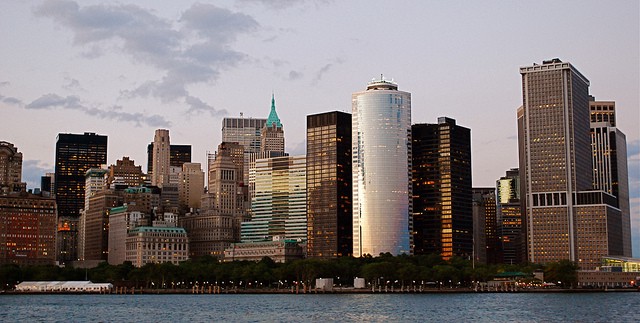
The oft-forgotten NYC Night Cruise (AKA “Party Boat” AKA “Booze Cruise”) is one of those magical opportunities that tourists seem to love but New York residents think they’re too good for. This is unfortunate because there’s nothing like a party-on-a-boat to remind you of the majestic beauty of the city you’ve been taking for granted. While there are plenty of amazing cruises departing from Chelsea Piers at any given night, here is just one: The Spirit of New York dinner cruise. The Spirit City New York outdoor deck is a perfect spot to gaze at the stars on New York Harbor. Grab a brew in the lounge or head for the dance club and move to the latest sounds. There’s a full food menu, attentive service and Broadway style entertainment. Not a bad environment in which to enjoy the world’s most dramatic skyline, right? Photo: vtravelled.com
Live Piano Karaoke at the Manhattan Inn

You’ve been to more karaoke nights than you can count. That’s all fine and good. But why not re-invigorate your sad spirit with a new variety of intimate, live piano karaoke? Every Tuesday at The Manhattan Inn in Greenpoint, Brooklyn, pianist Joe McGinty “holds court behind a grand piano, enthusiastically accompanying anyone with the desire to croon, sing, belt, or whisper their favorite song.” (There are over 200 to choose from). The Manhattan Inn’s dim, inviting atmosphere is the perfect spot to relax the nerves and prepare you for a night of pouring your heart out in public. Photo: The Manhattan Inn
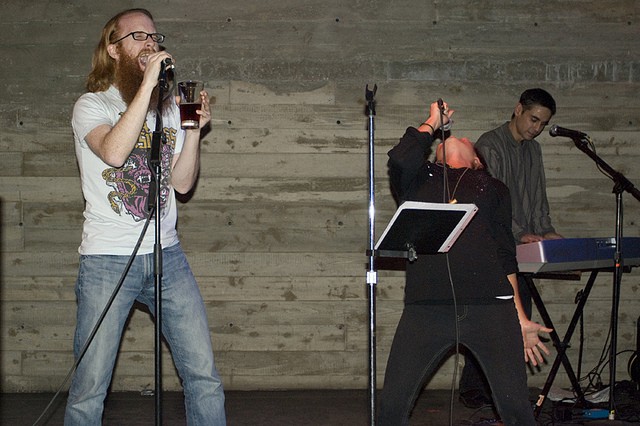
Galapagos — an arts and events space in the DUMBO neighborhood in Brooklyn — is the perfect spot to unlock your inner nerd. Stop in for a host of eclectic events, including Nerd Night Trivia, Superhero Cabaret, special guest lectures and film showings. Galapagos is even hosting a Pun Competition they’re calling Punderdome this October (it’s sure to be equal parts awesome and cringe worthy). If you’re looking to party late in to the night, check out the famous Floating Kabarette, featuring “a rotating cast of amazing artists…burlesque, magic, trapeze and much more.” After the show, a dance party keeps the fun coming till 1am. Check the venue’s website above for each week’s cast. Photo: AIGA/NY
Bowling and Music at Brooklyn Bowl
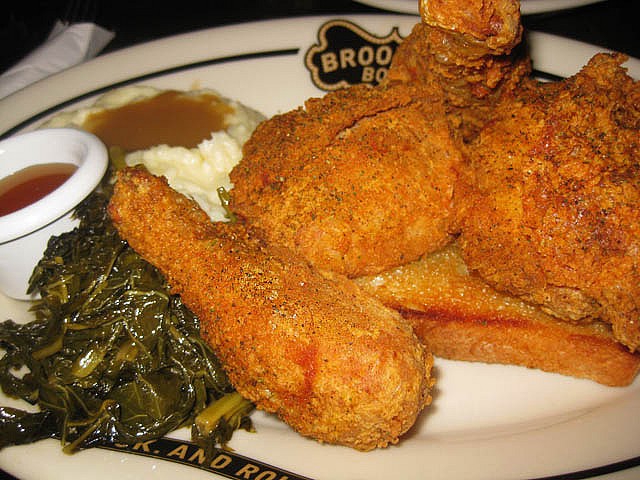
Originally an iron-works foundry in the 1880s, Brooklyn Bowl was transformed in 2009 in to the powerhouse concert and bowling venue it is today. In addition to topnotch pub and diner fare (including fried chicken, potato and onion knish, French bread pizzas and trout salad), Brooklyn Bowl offers an eclectic mix of live bands, DJs and performances. Photo: Jason Lam
One night Talib Kewli may be playing a hot DJ set, and the next the Williamsburg Salsa Orchestra will be taking over the dance floor. Anything is possible! And while Brooklyn Bowl does have an extensive events calendar on its website, perhaps the best course of action is to simply walk in on a random night and let yourself be surprised and delighted by the chance happenings of the evening.
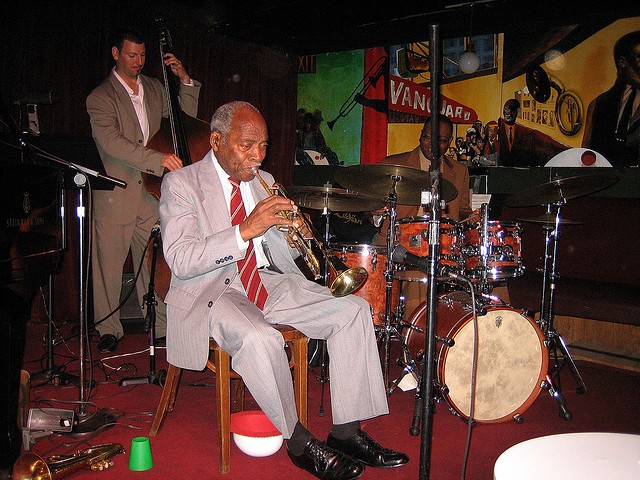
Remember that romantic idea you had of New York City? Well, you can still have it. Just hop on over to the Village Vanguard in Manhattan, an intimate jazz club founded in 1935. Throughout its storied history, The Vanguard has hosted some of the great jazz musicians in history, including John Coltrane, Miles Davis and Bill Evans. Not to mention, the 16-piece Vanguard Jazz Orchestra has been the Monday-night regular for more than 30 years. Photo: Professor Bop
Comedy at the Upright Citizen’s Brigade Theater
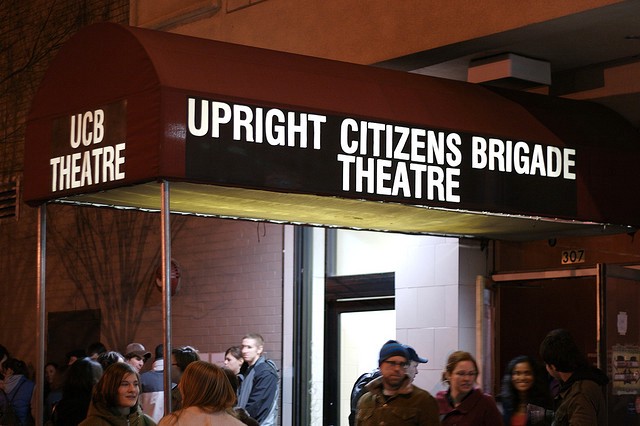
You’ve surely heard great things about the UBC Theater, but have you been yet? Maybe that one time with your friend from out of town? Well that’s simply not good enough. For those not in the know, here’s the deal: Upright Citizens Brigade Theatre hosts affordable comedy shows seven nights a week in NYC. You can watch the the best improv, sketch and standup in the country on UBC’s tiny stage. Not to mention, you never know when a surprise guest will show up out of no where. Oh you know, just people like Bill Murray or Chevy Chase. So stop making excuses and get over to the UBC theater this week. Photo: Marcin Wichary

BangOn! NYC is a somewhat mysterious event production company that produces one-of-a-kind themed nightlife spectacles. Here’s how it works: each party is carefully curated around a theme, like “Short Shorts” or “Warehouse of Horrors” or “3D.” Then DJs and partygoers (and people who are really, really good at setting up light shows) congregate at a unique location for up to 12 hours of music, stunning lights and all out dancing. It may sound simple, but it’s all in the execution. All you really need to know is that BangOn! NYC is notorious for throwing some of the craziest and best parties in NYC. So what are you waiting for? RSVP for their next one at their site now.
Learn more about how Heineken plans to get you to veer off the beaten path at www.routineinterruptions.com.
'Shy People' and the Consequences of Excavating a Lost Film
by Bobby Finger
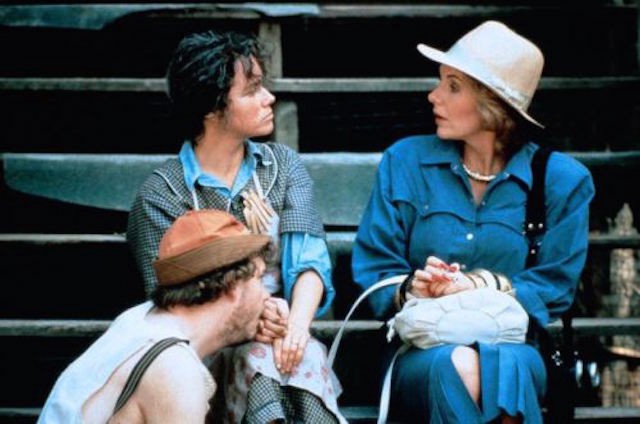
-Look over there.
-I don’t see anything.
-You don’t see them. They’ll see you.
Andrei Mikhalkov-Konchalovsky’s Shy People opened in New York and Los Angeles in December of 1987 after winning the award for Best Actress at the Cannes Film Festival and receiving a handful of rave reviews. The film was seen by few people and nominated for even fewer awards, even though its lead actors — Barbara Hershey, Jill Clayburgh, and Martha Plimpton — teetered somewhere on the mostly recognizable and well-liked edge of B- and C-list. In May of 1988, the film was given a slightly wider release, allowing it to take one final gasp of air before falling into the murky depths of forgotten films and becoming an official bomb.
Considering the fact that major publications failed to get even its general plot correct in their Fall movie previews, the fate of Shy People was unsurprising — most notably to Roger Ebert.
Of all of the great, lost films of recent years, “Shy People” must be the saddest case. Here is a great film that slipped through the cracks of an idiotic distribution deal and has failed to open in most parts of the country…If you want to see it, move decisively; it will be pushed aside soon by the big summer releases. With slightly different handling, “Shy People” could have been a best-picture Oscar nominee.
Roger Ebert
May 20, 1988
In 2014, Shy People barely exists. It’s only available on Laserdisc, VHS, and YouTube — a trifecta of 4:3 purgatory. The audio sucks; the video sucks; the whole experience sucks. But the film itself is a hell of a thing, even on the smallest of screens. After opening with a hypnotic, three-minute tracking shot through the streets of midtown Manhattan — one of the only parts of the film that the critics unanimously enjoyed — we meet Diana (Clayburgh), a staff writer for Cosmopolitan, and Grace (Plimpton), her rebellious and coke-addicted teen daughter who also happens to be sleeping with Diana’s ex. In an effort to mend their relationship, Diana asks Grace to tag along on her latest assignment: a feature on some kooky distant relatives who live deep in the Louisiana bayou that will no doubt make Cosmo readers giggle. After a lengthy journey through the alligator-infested swamps, they arrive at the home of cousin Ruth (Hershey) and her sons. Mark is a reluctant provider with a short fuse and a pregnant wife (Mare Winningham), whom Ruth despises; Tommy is the handsome one — about Grace’s age — whom Ruth has locked in a cage for reasons that are never revealed; and Pauly is a mentally handicapped gentle giant who’s unfazed by all the craziness surrounding him. The eldest son, Mike, moved away from the compound years ago. “He went to town,” Ruth tells Diana. “That’s dead to me…You’re with us, or you’re against us.” Oh, and Ruth’s dead husband Joe (actually dead, not just in town) haunts the surrounding bayous and keeps the whole family safe. Though the setup sounds like a fairly conventional “city folk meet country folk” narrative (one tackled with significantly more humor that same year in Big Business), Shy People quickly turns into a relentlessly bizarre and maybe-even-a-little-campy examination of life, death, and family.
Hershey’s performance is appropriately off the wall, and her Best Actress award at Cannes was well deserved. Though Ruth locks her son up in a cage, shoots an unarmed man in the hand, and sets a building on fire in the course of Shy People’s nearly two hours, she’s a character we come to sympathize with as her past — like the truth about her abusive dead husband — is slowly revealed. (That said: The winners of the predictably unpredictable festival are decided by its jury, which changes every year. In 1987, its president was Yves Montand, the beloved French actor and, apart from Norman Mailer [imagine Norman Mailer watching Shy People!], the entire jury hailed from Europe, so perhaps it was that perspective that made Hershey’s performance, as well as those given by the four actors portraying her sons, so exotic and appealing. What could be written off as a cheap caricature of an impoverished backwoods Louisiana family in the States might have been seen as something more exciting and believable to Montand and his peers. Or maybe they just respected it as the perfect performance for a Douglas-Sirk-Goes-To-The-Swamp melodrama. [Which is exactly what it is, really.])
Much of the credit for the film’s success in spite of the overwrought melodrama at its core belongs to the film’s production design. Though the characters often feel, oh, less than real, their surroundings are authentic to the point of discomfort. The compound, filmed on location Louisiana, is blanketed by a thick, sticky fog that makes it appear worlds away from anyone who isn’t a ghost. The home becomes a product of the bayou, much like the family that inhabits it.
Despite all of this — an atmosphere you could almost inhale, a collection of unforgettably strange performances, and a genre-bending screenplay — Shy People flopped! It absolutely flopped, y’all. Roger Ebert detailed the shady distribution deal that would make its theatrical run a bomb, but that doesn’t really explain its failure to re-emerge on home video (as well-reviewed box office bombs often do). I suppose it was caused by a combination of little things: a studio that soon went out of business, legal issues involving distribution rights, overall lack of interest, or maybe — now hear me out — maybe it’s not a good movie. What if no one remembers Shy People because Shy People sucks?
Pretend I didn’t write the beginning of this. Pretend you don’t know some sob story about a movie that could have had it all but didn’t. There’s something about watching a forgotten movie — or, more specifically, watching a movie because it’s forgotten — that turns deciding whether or not the movie is good into a tug of war between your normal self and your inner Pauline Kael. The “cult” of a cult movie is primarily one hell-bent on remembering. Being part of a group that breathed new life into a movie no one saw in theaters like, oh, Empire Records will always give the movie’s fans a sense of pride, but it will never change the fact that Empire Records blows. Watching Shy People a second time, I found myself actively wondering whether or not the movie was actually good, or whether I desperately wanted it to be good because life can be so boring and it’s exciting to discover things and I mean come on who doesn’t love rooting for the underdog.
Did that scene where Jill Clayburgh click clacks through Barbara Hershey’s home on the bayou, purse in hand, marveling at the backwoods decor and occasionally checking her hair in a compact exemplify how her performance was a brilliant satire of successful, self-absorbed writers who are unfamiliar with life outside of Manhattan? The first time I watched Shy People, I thought so. The second time I watched Shy People, I just thought Clayburgh was really hamming it up. The entirety of my second viewing was filled with moments like this. Interesting choices were suddenly lazy ones. Brilliant became brash. Dark became gratuitous. And the film’s final shot? Well, I don’t know if I was ever on board.
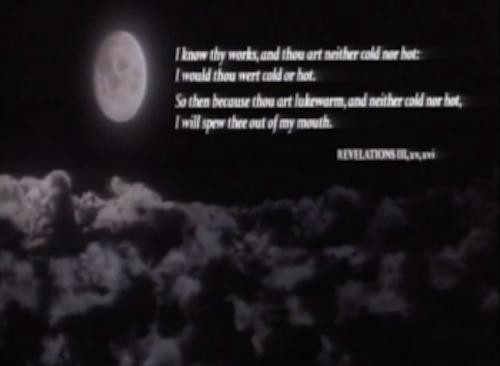
This is not to say that Shy People isn’t worth watching, I believe it is! Hershey’s performance is a good one, as is Martha Plimpton’s. And it’s always nice to be reminded of what a captivating presence the late Clayburgh always had onscreen. To me, it’s a reminder of how much bigger movies are than themselves. They are the story onscreen + the story of their creation + the story of the first time you ever saw it + the story written by the critic you like + the story written by the critic you hate + all the stories you haven’t even heard yet.
There’s a famous (“famous”) monologue from Sideways in which Maya (Virginia Madsen) discusses why she likes wine. It’s expertly read by Madsen and complemented by a delicate piano piece that adds a nice little touch of melancholy. It’s the best moment of the entire movie. It’s also so on the nose that, when read out of context, it kind of hurts. There she is, comparing a human life to a bottle of wine in a way that lacks an ounce subtlety (it could almost be interpreted as cruel), but it works. There’s something about Madsen + the music + the fact that she lost the Oscar that year (oh my GOD don’t get me started) that adds up to something worth remembering.
Shy People? Meh. The story of Shy People? It tastes so fucking good.
Bobby Finger is a shy people.
Grouper, "Call Across Rooms"
There is depressive music that tightens the girdle of neuroses around your brain and then depressive music that loosens it. Music that forces you to stare at the ceiling and music that lets you close your eyes for a minute. Music to breath in, music to breath out. A whole rich taxonomy, probably, with fans too lethargic to write it.
A New York Times Lifehack
“In the war between a sensitive nose and the city streets, the streets have the upper hand, assailing the nose with the odors of urine, decomposing garbage and clammy armpits. Mouth breathing is not only acceptable, but often necessary.”
